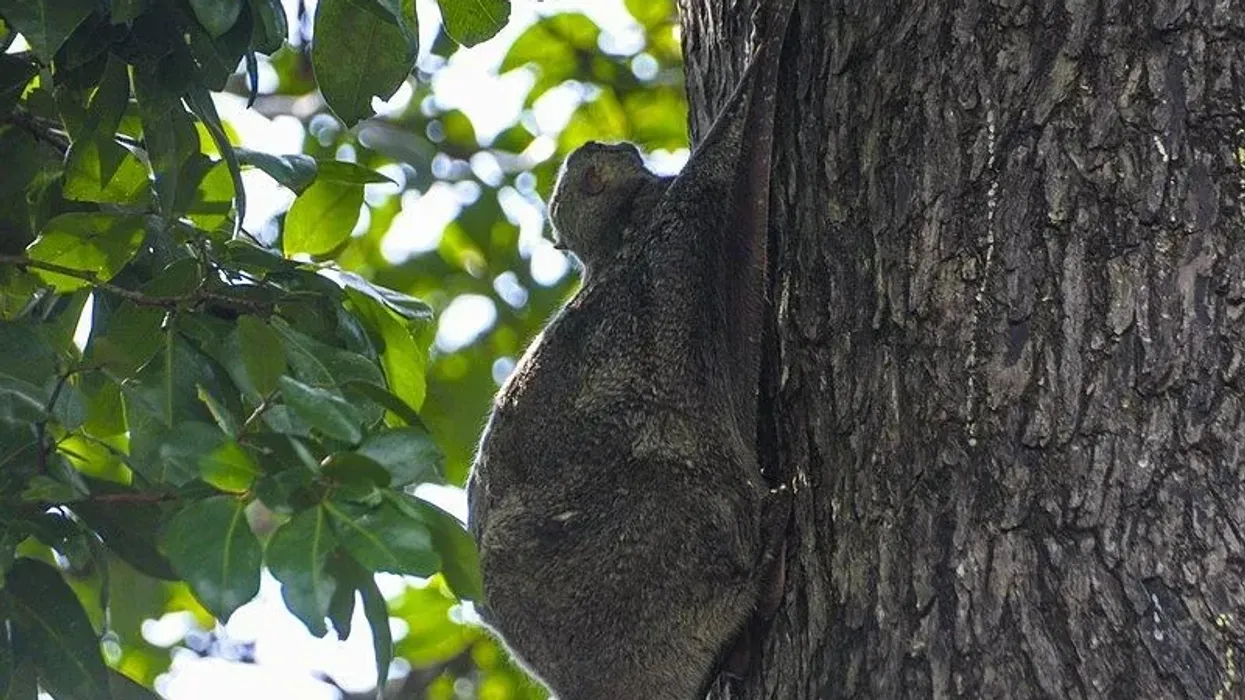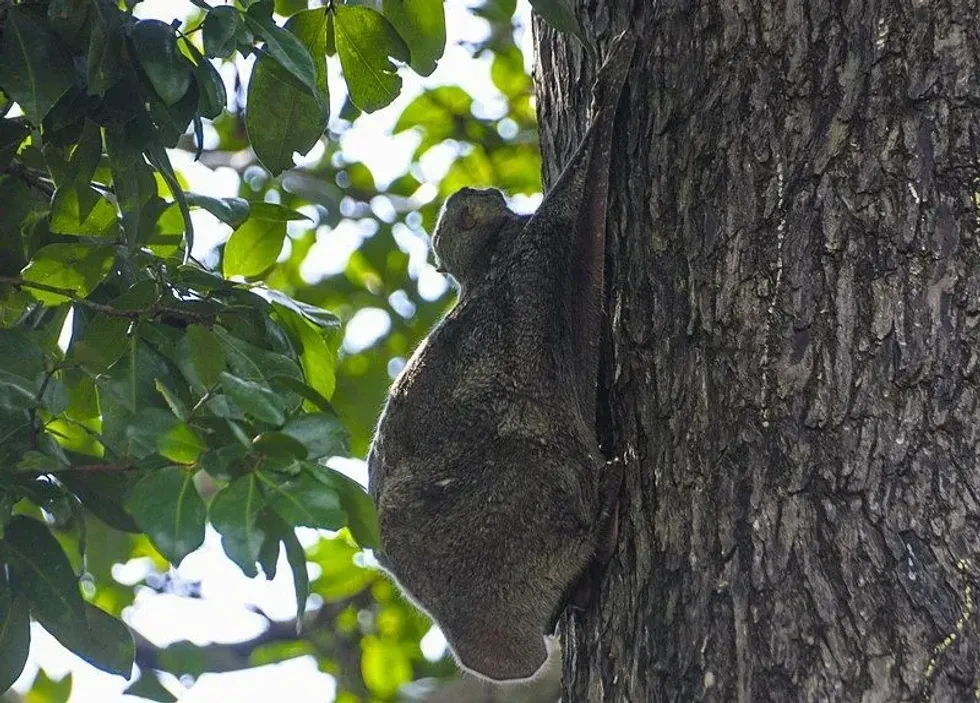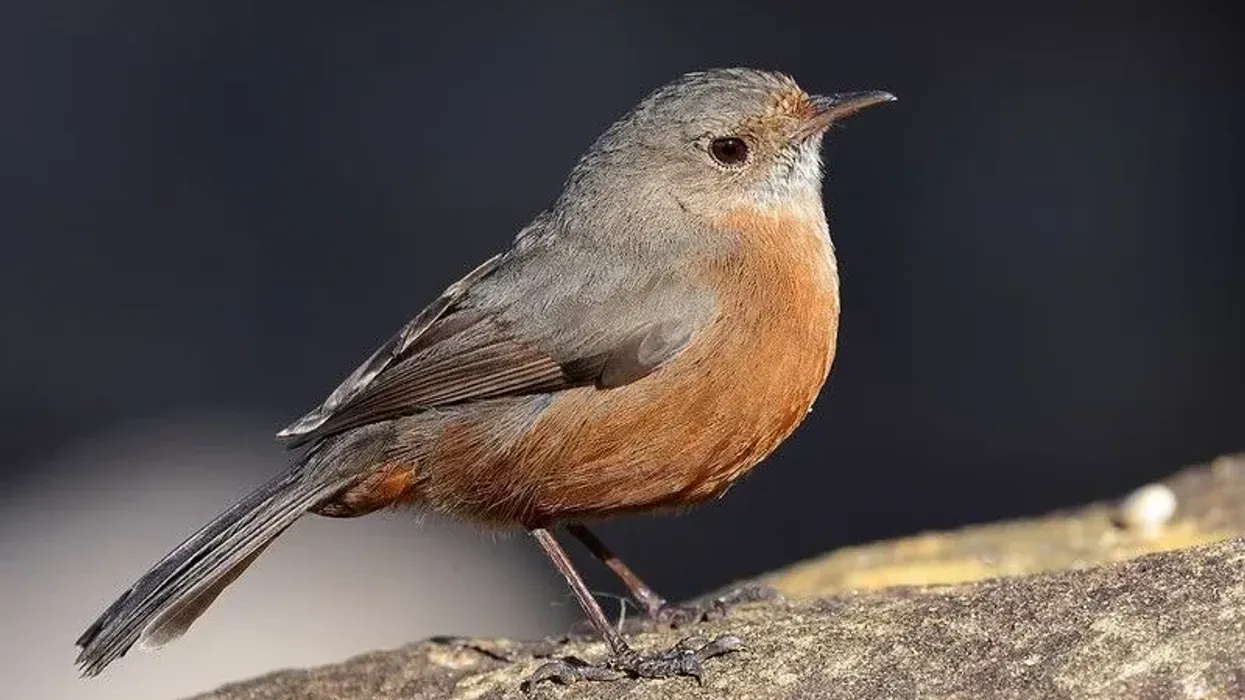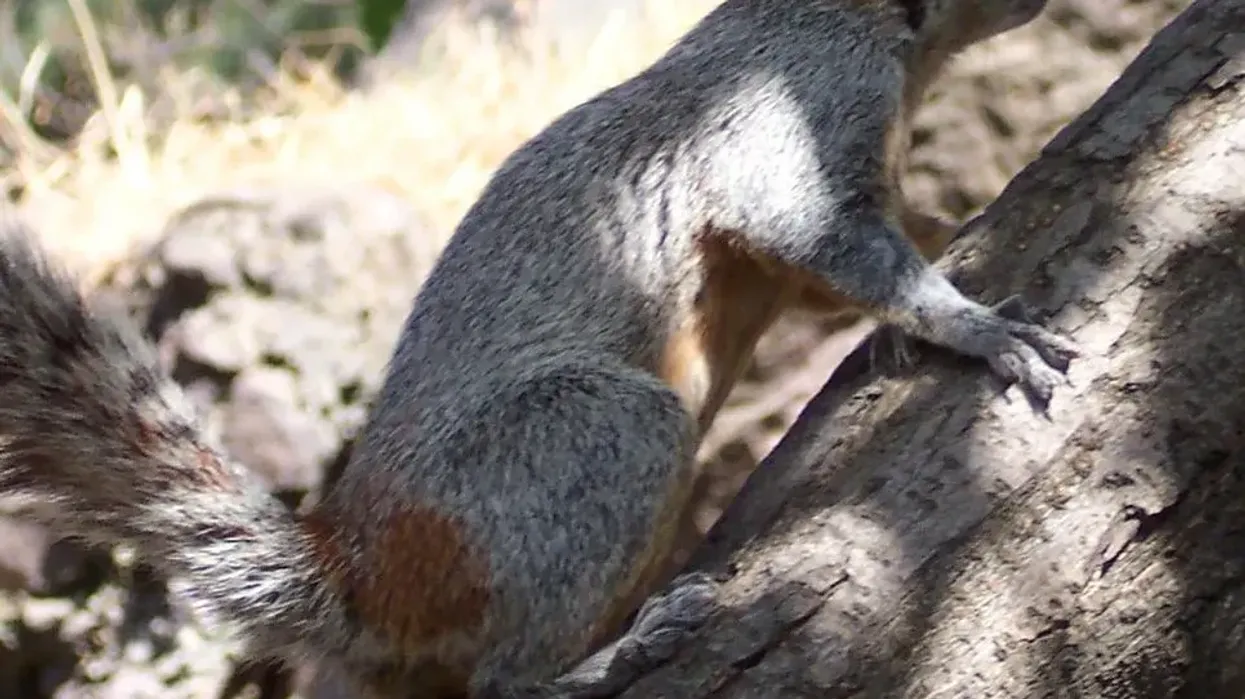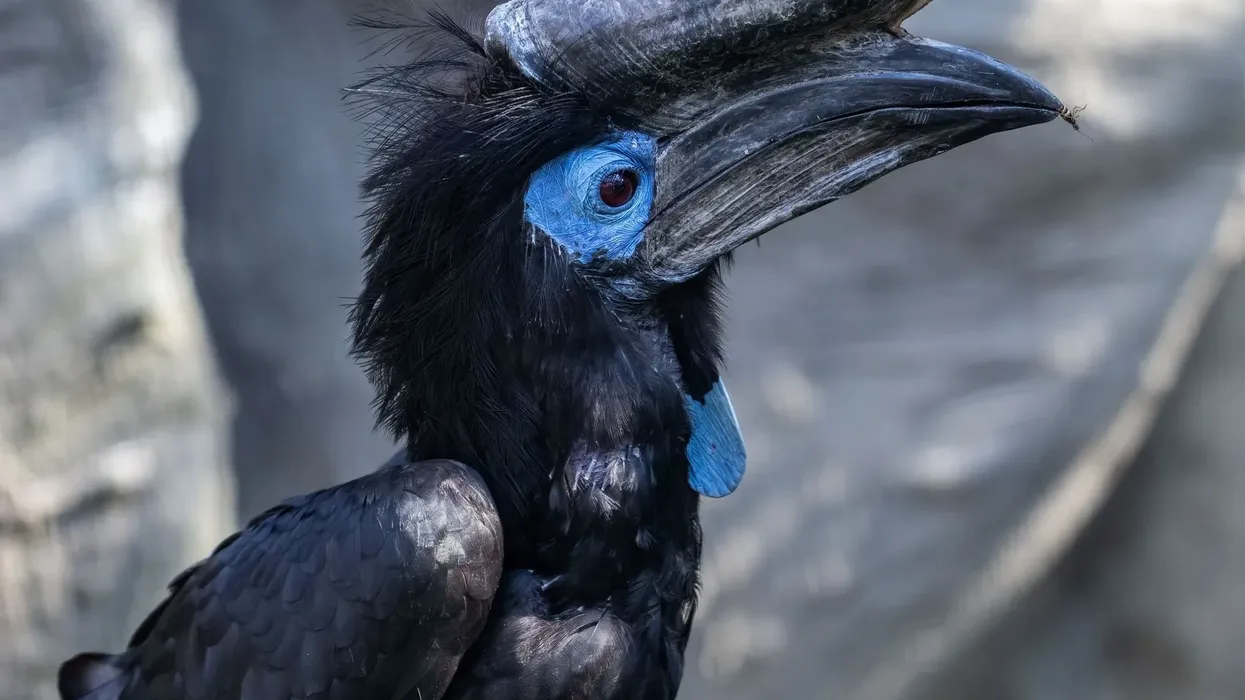Among the 50 identified species of flying squirrels, the large black flying squirrel is considered to be the largest. The black flying squirrel (Aeromys tephromelas) and Thomas's flying squirrel (Aeromys thomasi) are the two species of large black flying squirrels that are limited within the boundaries of Southeast Asia.
Belonging to the family Sciuridae, black flying squirrels are essentially tree-dwelling, nocturnal animals of the wild who prefer to stick to their habitat in the forest.
Most of their activities commence post sundown, especially when it becomes pitch dark and impossible to identify these dark-colored animals. The scarcity of primary data by the International Union for Conservation of Nature (IUCN) renders a lack of insight into this extraordinary species.
Similar to any other flying squirrel, black flying squirrels tend to survive predation by constructing nests inside tree cavities in the daytime. These nests are well hidden from the sights of potential predators.
However, these squirrels classified among rodents are not liked by households.
Normally, a flying squirrel gets inside houses primarily in search of food or to raise their litter (mostly in the months of April or May when they are born) in a protected environment where they have proper insulation. Sometimes the animal seeks shelter from the bitter cold and takes refuge in warm homes.
If you found this content fascinating, then also read through some mind-boggling facts about the gopher and woodrat.
Black Flying Squirrel Interesting Facts
What type of animal is a black flying squirrel?
Classified under the family of Sciuridae, the black flying squirrel (Aeromys tephromelas) is a rodent species.
What class of animal does a black flying squirrel belong to?
The black flying squirrel has been categorized under the class Mammalia.
How many black flying squirrels are there in the world?
The exact number of this species within their geographical range is undocumented and thus uncertain. Some wildlife researchers consider black flying squirrels to be threatened, while others contest this idea.
For instance, the smoky flying squirrel native to Southeast Asia and northern flying squirrels in Pennsylvania, USA, are believed to be endangered with dwindling populations. However, no concrete information about the present status or the population trend of black flying squirrels is available to draw a conclusive statement.
Where does a black flying squirrel live?
Indigenous to the Southeast Asian forests, Aeromys tephromelas can be found in Thailand, Malaysia, and Indonesia. They are common in the Malayan Peninsula. Also, Borneo, Sumatra, and Penang islands fall within their geographical range.
What is a black flying squirrel's habitat?
Like the northern flying squirrel (Glaucomys sabrinus), black flying squirrels are arboreal. They engage in gliding through thin air while taking huge leaps between trees.
They spend relatively less time on the ground, and the movements tend to become very clumsy. Therefore, their habitat range includes less dense forests with large trees. More space offers them the privilege to glide about freely within the forest area.
Who do black flying squirrels live with?
Flying squirrels are known to be very social as they mostly prefer to stay aloof in solitude. However, these squirrels do form pairs and nest together with members of the family, especially to keep themselves in a cozy and warm environment during the harsh winter times.
How long does a black flying squirrel live?
Generally, the life expectancy of black flying squirrels is estimated at around five to 10 years in the wild and about 10-20 years in captivity. In comparison, giant flying squirrels have a similar lifespan.
How do they reproduce?
The behavior of Aeromys tephromelas during the breeding period requires detailed research due to the lack of studies in the field. It is, however, known that post copulation, the females of these flying squirrels give birth to a range of one to four kittens.
The young ones are born between April and May. Right from birth, the young ones stay confined to the nest until weaning which takes place between three to four months.
The young are nurtured under parental care until they become self-reliant which takes about a year. After a year, they finally leave the nest.
What is their conservation status?
The preservation status of black flying squirrels, as per the International Union for Conservation of Nature (IUCN), is Data Deficient. The populations of this species within its geographical habitat cannot be determined due to the dearth of information.
Black Flying Squirrel Fun Facts
What do black flying squirrels look like?
The primary body color of this species is black. The shade of their dorsal fur ranges from deep brown to black, while the underparts are in the darker shades of brown and gray.
The males are relatively smaller than the females. They have a small-sized head, soft fur, and a long tail. It is due to their appearance that locating a black and white flying squirrel in the black hills or forests of Southeast Asia is a challenge.

*Please note that this is a eastern grey squirrel from the Sciuridae family, not a black flying squirrel. If you have an image of a black flying squirrel please let us know at hello@kidadl.com.
How cute are they?
Normally most people don't consider rodents to be cute, but a wildlife photographer or enthusiast might marvel with delight at the sight of these flying squirrels. Although this furry little creature with its long tail and a tiny head is difficult to trace in the dark, it possesses an appealing look.
How do they communicate?
Apart from vocalizations, flying squirrels interact with each other through touch and smell. Vocalizations include low to high-pitched chirps and clucks.
How big is a black flying squirrel?
The average length of a black flying squirrel is around 10-17 in (25.4-43.1 cm). These squirrels are quite large when compared to the northern flying squirrel (Glaucomys sabrinus), standing at a length of around 6.3 in (16 cm).
Even southern flying squirrels are comparatively smaller, with an average range of 8.3-10 in (21-25.4 cm). However, Japanese giant flying squirrels are bigger than them.
How fast can a black flying squirrel run?
The speed range of black flying squirrels is yet to be discovered.
How much does a black flying squirrel weigh?
The average weight of a black flying squirrel is in the range of about 40-44 oz (1133-1247 g). Red and white giant flying squirrels have an average weight that is more than this species.
What are the male and female names of the species?
A male squirrel is referred to as a boar and female squirrels are called sows.
What would you call a baby black flying squirrel?
Just like the baby of any species of squirrel, a baby or young black flying squirrel is regarded as a kitten or, to keep it short and simple, a kit.
What do they eat?
Black flying squirrels are omnivorous. Although specific details about their diet and food habits are unavailable, it is believed that their menu comprises shoots, leaves, grains, seeds, fruits, nuts, and several insects.
Are they dangerous?
In general, flying squirrels are not at all dangerous, and their interaction with humans is not considered threatening due to their non-aggressive nature. However, it must be kept in mind that these wild animals possess sharp teeth that have the potential to inflict painful wounds. It is safer not to encroach upon their habitat and disturb their activities.
Would they make a good pet?
Generally, rodents are not reared as pets. Moreover, estranging these wild creatures, who might already be threatened from their habitat, is highly unethical. Interestingly, these squirrels have been traced close to some Malaysian villages which indicates that they can form bonds with humans. You might come across a flying squirrel looking for seeds and nuts in your garden.
Did you know...
It is almost impossible to find a black flying squirrel in black light owing to its black-colored body. A torchlight might help to detect these squirrels. Additionally, they avoid dwelling on the ground, so you might be completely unaware if these black flying squirrels glide past you.
Infrequent breeding coupled with a very small litter size indicates a slow growth rate in their populations all over the world.
In winter, these squirrels accommodate themselves in houses or warm tree cavities near food sources where they can find ample seeds, nuts, and fruits for their diet.
Did you know that flying squirrels are repelled by certain smells? The smell of garlic, peppermint, black pepper, or white pepper keeps these rodents at bay.
What is unique about the black flying squirrel?
The most unique and defining characteristic of flying squirrels is that they don't fly. They actually glide from tree to tree in swift motions.
The folds in the skin around the legs, when stretched, tend to act like a parachute or sails when squirrels take a huge leap from a branch of a tree to another, placing them in a flying-like motion. By implementing this gliding technique, these animals can cover a range of long distances.
Is the black flying squirrel endangered?
As stated by the International Union for Conservation of Nature (IUCN), due to data deficiency, the number of black flying squirrels is unknown. No concrete judgments can be made regarding the current status of this species.
However, it is also known that among other flying squirrel species, southern flying squirrels are endangered. Since there's no information about this species, it implies that preservation measures are necessary to ensure that black flying squirrels are not in a vulnerable or threatened position.
Predation is one of the major threats associated with the preservation of this species, along with habitat loss. With proper awareness programs, stringent wildlife preservation acts must be enforced by governments to secure the habitat range of this species. Hunting and illegal trading must be completey banned and penalties must be imposed on offenders to curb unethical activities.
Here at Kidadl, we have carefully created lots of interesting family-friendly animal facts for everyone to discover! For more relatable content, check out these fox squirrel facts and American marten facts for kids.
You can even occupy yourself at home by coloring in one of our free printable black flying squirrel coloring pages.
* Please note that the main image is of a red giant flying squirrel. If you have an image of a black flying squirrel please let us know at hello@kidadl.com.

